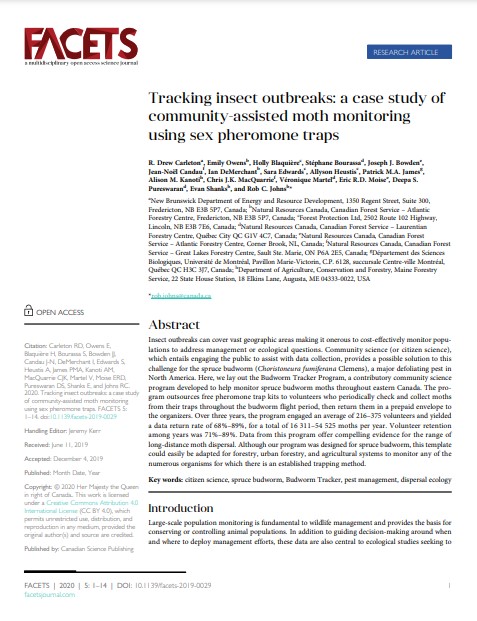Tracking insect outbreaks: a case study of community-assisted moth monitoring using sex pheromone traps
Bosque Modelo:
Fundy
Temática:
Gestión forestal
Tipo de documento:
Artículo científico
Resumen
Insect outbreaks can cover vast geographic areas making it onerous to cost-effectively monitor populations to address management or ecological questions. Community science (or citizen science), which entails engaging the public to assist with data collection, provides a possible solution to this challenge for the spruce budworm (Choristoneura fumiferana Clemens), a major defoliating pest in North America. Here, we lay out the Budworm Tracker Program, a contributory community science program developed to help monitor spruce budworm moths throughout eastern Canada. The program outsources free pheromone trap kits to volunteers who periodically check and collect moths from their traps throughout the budworm flight period, then return them in a prepaid envelope to the organizers. Over three years, the program engaged an average of 216–375 volunteers and yielded
a data return rate of 68%–89%, for a total of 16 311–54 525 moths per year. Volunteer retention among years was 71%–89%. Data from this program offer compelling evidence for the range of long-distance moth dispersal. Although our program was designed for spruce budworm, this template could easily be adapted for forestry, urban forestry, and agricultural systems to monitor any of the numerous organisms for which there is an established trapping method.
Información Bibliográfica
Autor:
Carleton RD, Owens E, Blaquière H, Bourassa S, Bowden JJ, Candau J-N, DeMerchant I, Edwards S, Heustis A, James PMA, Kanoti AM, MacQuarrie CJK, Martel V, Moise ERD, Pureswaran DS, Shanks E, and Johns RC
Revista:
FACETS
Año:
2020
N°:
-
País :
Canadá
Páginas:
91 - 104
Volumen:
5
Idioma:
Ingles
Palabras claves
citizen science, spruce budworm, Budworm Tracker, pest management, dispersal ecology





